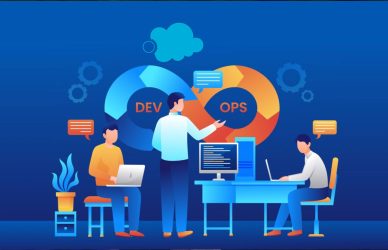Introduction: Why Your DevOps Resume Matters in 2025
The demand for DevOps engineers is skyrocketing—especially those with multi-cloud expertise. But in a crowded job market where recruiters rely on Applicant Tracking Systems (ATS), a well-optimized and impactful resume is essential.
Whether you’re targeting roles in cloud automation, infrastructure-as-code, or CI/CD deployment, your resume must communicate technical depth, platform versatility, and real-world business impact. This guide walks you through building a DevOps resume that gets noticed in 2025.
Step 1: Understand What Recruiters Are Looking For
Modern hiring managers look for resumes that demonstrate:
- Experience with AWS, Azure, and GCP
- Use of automation tools like Terraform, Ansible, Jenkins
- CI/CD pipeline deployment and orchestration
- Knowledge of cloud security, monitoring, and cost optimization
- Cloud certifications and project ownership
“We scan for key DevOps tools and real-world cloud deployment experience. The more impact metrics, the better.”
— Technical Recruiter, CloudDevOpsJobs.com
Step 2: Optimize for ATS with DevOps Resume Keywords
Include keywords naturally—no keyword stuffing. Focus on relevance.
Cloud Platforms:
- AWS (EC2, Lambda, S3)
- Azure (AKS, Resource Manager)
- GCP (Cloud Functions, BigQuery)
DevOps Tools:
- Terraform, CloudFormation, Pulumi
- Jenkins, GitHub Actions, GitLab CI
- Docker, Kubernetes, Helm
- Prometheus, ELK Stack, Datadog
- Vault, Ansible, Chef
Processes:
- Infrastructure as Code (IaC)
- CI/CD pipeline design
- Auto-scaling and high availability
- Zero-downtime deployments
- DevSecOps compliance
Use 8–12 keywords from the job description, customized per application.
Step 3: Write a Standout Summary Section
Start your resume with a value-packed summary in 2–4 lines.
Example:
Multi-cloud DevOps Engineer with 6+ years of experience deploying scalable infrastructure across AWS, Azure, and GCP. Skilled in IaC, CI/CD pipelines, Kubernetes, and cloud cost optimization. Certified AWS Solutions Architect and Terraform expert.
This immediately establishes credibility and specialization.
Step 4: Showcase Technical Skills Clearly
Organize your skillset into meaningful categories. Example:
Cloud Platforms: AWS, Azure, GCP
IaC Tools: Terraform, CloudFormation
CI/CD Tools: Jenkins, GitHub Actions, GitLab CI
Containers: Docker, Kubernetes
Monitoring: Prometheus, Grafana, Datadog
Scripting: Bash, Python, YAML
Avoid dumping long tool lists—show relevance to current roles.
Step 5: Highlight Projects with Business Impact
Structure each bullet to show tech + results.
Good Example:
Automated multi-cloud provisioning using Terraform, reducing deployment time by 70% across AWS and Azure.
Poor Example:
Used Terraform and Jenkins for deployments.
Use 2–4 bullets per project, and link to GitHub repos or blog walkthroughs if available.
Step 6: Include Certifications and Courses
Certifications validate your skills and increase visibility for recruiter searches.
Top Certifications for 2025:
- AWS Certified Solutions Architect – Associate
- Microsoft Certified: Azure DevOps Engineer Expert
- Google Professional Cloud DevOps Engineer
- HashiCorp Certified: Terraform Associate
- Docker Certified Associate
You can also include trusted online courses from A Cloud Guru, Coursera, Pluralsight, or Udemy.
Step 7: Format Your Resume for Readability & ATS
Follow these formatting best practices:
- Use clean, single-column layout
- Stick to standard section titles: Summary, Skills, Experience, Certifications
- Save in .docx or PDF formats
- Avoid images, tables, or icons
- Keep to:
- 1 page for junior/mid-level
- 2 pages for senior-level with multiple roles/projects
Sample Multi-Cloud DevOps Resume (2025 Template)
Raj Mehta
Multi-Cloud DevOps Engineer | AWS | Azure | GCP
raj.mehta@email.com | github.com/rajmehta | linkedin.com/in/rajmehta
SUMMARY
Certified DevOps Engineer with 5+ years of experience building cloud-native infrastructure across AWS, Azure, and GCP. Proficient in Terraform, Jenkins, and Kubernetes with a strong focus on automation, uptime, and cost efficiency.
TECHNICAL SKILLS
Cloud Platforms: AWS, Azure, GCP
IaC Tools: Terraform, CloudFormation
CI/CD: GitHub Actions, Jenkins
Containers: Docker, Kubernetes
Monitoring: Prometheus, Grafana
Languages: Python, Bash
EXPERIENCE
DevOps Engineer
AcmeTech, San Francisco, CA | Jan 2022 – Present
- Built multi-cloud CI/CD pipelines using GitHub Actions and Terraform
- Migrated legacy infrastructure to GCP, reducing cloud costs by 30%
- Deployed secure Kubernetes clusters with auto-scaling and backup
- Implemented monitoring via Prometheus and Grafana
Cloud Engineer (Contract)
Freelance via CloudDevOpsJobs.com | Jan 2021 – Dec 2021
- Provisioned Azure infrastructure using Terraform and ARM templates
- Deployed serverless applications with AWS Lambda and API Gateway
- Conducted cost audits, identifying $50K+ in annual savings
CERTIFICATIONS
- AWS Certified Solutions Architect – Associate (2024)
- Azure DevOps Engineer Expert (2023)
- Terraform Associate (2023)
Final Thoughts
In 2025, your DevOps resume needs to work harder than ever before. By blending cloud expertise, real-world project impact, and strategic formatting, you can stand out to recruiters and hiring managers.
Ready to apply? Visit www.clouddevopsjobs.com for multi-cloud job listings, resume templates, and direct apply options tailored for DevOps professionals.







